WoRMS taxon details
Rapana venosa (Valenciennes, 1846)
140416 (urn:lsid:marinespecies.org:taxname:140416)
accepted
Species
Purpura marginata Valenciennes, 1846 · unaccepted (synonym)
Purpura venosa Valenciennes, 1846 · unaccepted (original combination)
Rapana pechiliensis Grabau & S. G. King, 1928 · unaccepted (synonym)
Rapana pontica F. Nordsieck, 1968 · unaccepted (synonym)
Rapana thomasiana Crosse, 1861 · unaccepted > junior subjective synonym
marine
(of Purpura venosa Valenciennes, 1846) Valenciennes A. (1846). Atlas de Zoologie. Mollusques. <em>In: A. du Petit-Thouars, Voyage autour du monde sur la frégate la Venus pendant les années 1836–1839.</em> 4 vols. [Mollusques: pls. 1, 1bis, 2, 2bis, 3, 3bis, 4–24; no text]., available online at https://www.biodiversitylibrary.org/page/54753345
page(s): 22, pl. 7 figs 1,1a. [details]
page(s): 22, pl. 7 figs 1,1a. [details]
MolluscaBase eds. (2024). MolluscaBase. Rapana venosa (Valenciennes, 1846). Accessed through: World Register of Marine Species at: https://www.marinespecies.org/aphia.php?p=taxdetails&id=140416 on 2024-07-26
![]() The webpage text is licensed under a Creative Commons Attribution 4.0 License
The webpage text is licensed under a Creative Commons Attribution 4.0 License
original description
(of Rapana thomasiana Crosse, 1861) Crosse H. (1861). Description d'espèces nouvelles. <em>Journal de Conchyliologie.</em> 9(2): 171-176., available online at https://www.biodiversitylibrary.org/page/15608276 [details]
original description (of Purpura marginata Valenciennes, 1846) Valenciennes A. (1846). Atlas de Zoologie. Mollusques. <em>In: A. du Petit-Thouars, Voyage autour du monde sur la frégate la Venus pendant les années 1836–1839.</em> 4 vols. [Mollusques: pls. 1, 1bis, 2, 2bis, 3, 3bis, 4–24; no text]., available online at https://www.biodiversitylibrary.org/page/54753345
page(s): pl. 7 figs 3,3a. [details]
original description (of Purpura venosa Valenciennes, 1846) Valenciennes A. (1846). Atlas de Zoologie. Mollusques. <em>In: A. du Petit-Thouars, Voyage autour du monde sur la frégate la Venus pendant les années 1836–1839.</em> 4 vols. [Mollusques: pls. 1, 1bis, 2, 2bis, 3, 3bis, 4–24; no text]., available online at https://www.biodiversitylibrary.org/page/54753345
page(s): 22, pl. 7 figs 1,1a. [details]
original description (of Rapana pontica F. Nordsieck, 1968) Nordsieck, F. (1968). <i>Die europäischen Meeres-Gehäuseschnecken (Prosobranchia). Vom Eismeer bis Kapverden und Mittelmeer</i>. Gustav Fischer, Stuttgart. VIII + 273 pp. [details]
context source (Introduced species) Katsanevakis, S.; Bogucarskis, K.; Gatto, F.; Vandekerkhove, J.; Deriu, I.; Cardoso A.S. (2012). Building the European Alien Species Information Network (EASIN): a novel approach for the exploration of distributed alien species data. <em>BioInvasions Records.</em> 1: 235-245., available online at http://easin.jrc.ec.europa.eu [details] Available for editors [request]
[request]
basis of record Gofas, S.; Le Renard, J.; Bouchet, P. (2001). Mollusca. in: Costello, M.J. et al. (eds), European Register of Marine Species: a check-list of the marine species in Europe and a bibliography of guides to their identification. <em>Patrimoines Naturels.</em> 50: 180-213., available online at http://www.vliz.be/imisdocs/publications/ocrd/254404.pdf [details]
additional source Kerckhof, F.; Vink, R.J.; Nieweg, D.C.; Post, J.J.N. (2006). [The veined whelk <i>Rapana venosa</i> has reached the North Sea]. <i>Aquatic Invasions 1(1)</i>: 35-37 (look up in IMIS) [details]
additional source Streftaris, N., A. Zenetos & E. Papathanassiou. (2005). Globalisation in marine ecosystems: the story of non-indigenous marine species across European seas. <em>Oceanogry and Marine Biology: an Annual Review.</em> 43: 419-453. (look up in IMIS) [details] Available for editors [request]
[request]
additional source Zenetos, A.; Çinar, M.E.; Pancucci-Papadopoulou, M.A.; Harmelin, J.-G.; Furnari, G.; Andaloro, F.; Bellou, N.; Streftaris, N.; Zibrowius, H. (2005). Annotated list of marine alien species in the Mediterranean with records of the worst invasive species. <em>Mediterranean Marine Science.</em> 6 (2): 63-118., available online at https://www.researchgate.net/publication/273213810_Annotated_list_of_marine_alien_species_in_the_Mediterranean_with_records_of_the_worst_invasive_species [details] Available for editors [request]
[request]
additional source Occhipinti-Ambrogi, A., A. Marchini, G. Cantone, A. Castelli, C. Chimenz, M. Cormaci, C. Froglia, G. Furnari, M.C. Gambi, G. Giaccone, A. Giangrande, C. Gravil, F. Mastrototaro, C. Mazziotti, L. Orsi-Relini & S. Piraino. (2010). Alien species along the Italian coasts: an overview. <em>Biological Invasions.</em> 13(1): 215-237., available online at https://doi.org/10.1007/s10530-010-9803-y [details] Available for editors [request]
[request]
additional source Liu, J.Y. [Ruiyu] (ed.). (2008). Checklist of marine biota of China seas. <em>China Science Press.</em> 1267 pp. (look up in IMIS) [details] Available for editors [request]
[request]
additional source Zenetos, A.; Gofas, S.; Verlaque, M.; Cinar, M.; Garcia Raso, J.; Bianchi, C.; Morri, C.; Azzurro, E.; Bilecenoglu, M.; Froglia, C.; Siokou, I.; Violanti, D.; Sfriso, A.; San Martin, G.; Giangrande, A.; Katagan, T.; Ballesteros, E.; Ramos-Espla, A.; Mastrototaro, F.; Ocana, O.; Zingone, A.; Gambi, M.; Streftaris, N. (2010). Alien species in the Mediterranean Sea by 2010. A contribution to the application of European Union's Marine Strategy Framework Directive (MSFD). Part I. Spatial distribution. <em>Mediterranean Marine Science.</em> 11(2): 381-493., available online at https://doi.org/10.12681/mms.87 [details]
additional source Claremont, M., Vermeij, G. J., Williams, S. T. & Reid, D. G. (2013). Global phylogeny and new classification of the Rapaninae (Gastropoda: Muricidae), dominant molluscan predators on tropical rocky seashores. <em>Molecular Phylogenetics and Evolution.</em> 66: 91–102. [Published online 28 September 2012; Code-compliant paper version published January 2013]. [details] Available for editors [request]
[request]
additional source Marchini, A., J. Ferrario, A. Sfriso & A. Occhipinti-Ambrogi. (2015). Current status and trends of biological invasions in the Lagoon of Venice, a hotspot of marine NIS introductions in the Mediterranean Sea. <em>Biological Invasions.</em> 17:2943–2962., available online at https://doi.org/10.1007/s10530-015-0922-3 [details] Available for editors [request]
[request]
additional source Dağtekin, M. (2023). The invasive mollusk Rapana venosa (Mollusca: Neogastropoda: Muricidae) in the mid-southern Black Sea: Distribution, growth, and stock structure. <em>Acta Ichthyologica et Piscatoria.</em> 53: 191-199., available online at https://aiep.pensoft.net/article/113745/list/8/ [details]
original description (of Purpura marginata Valenciennes, 1846) Valenciennes A. (1846). Atlas de Zoologie. Mollusques. <em>In: A. du Petit-Thouars, Voyage autour du monde sur la frégate la Venus pendant les années 1836–1839.</em> 4 vols. [Mollusques: pls. 1, 1bis, 2, 2bis, 3, 3bis, 4–24; no text]., available online at https://www.biodiversitylibrary.org/page/54753345
page(s): pl. 7 figs 3,3a. [details]
original description (of Purpura venosa Valenciennes, 1846) Valenciennes A. (1846). Atlas de Zoologie. Mollusques. <em>In: A. du Petit-Thouars, Voyage autour du monde sur la frégate la Venus pendant les années 1836–1839.</em> 4 vols. [Mollusques: pls. 1, 1bis, 2, 2bis, 3, 3bis, 4–24; no text]., available online at https://www.biodiversitylibrary.org/page/54753345
page(s): 22, pl. 7 figs 1,1a. [details]
original description (of Rapana pontica F. Nordsieck, 1968) Nordsieck, F. (1968). <i>Die europäischen Meeres-Gehäuseschnecken (Prosobranchia). Vom Eismeer bis Kapverden und Mittelmeer</i>. Gustav Fischer, Stuttgart. VIII + 273 pp. [details]
context source (Introduced species) Katsanevakis, S.; Bogucarskis, K.; Gatto, F.; Vandekerkhove, J.; Deriu, I.; Cardoso A.S. (2012). Building the European Alien Species Information Network (EASIN): a novel approach for the exploration of distributed alien species data. <em>BioInvasions Records.</em> 1: 235-245., available online at http://easin.jrc.ec.europa.eu [details] Available for editors
basis of record Gofas, S.; Le Renard, J.; Bouchet, P. (2001). Mollusca. in: Costello, M.J. et al. (eds), European Register of Marine Species: a check-list of the marine species in Europe and a bibliography of guides to their identification. <em>Patrimoines Naturels.</em> 50: 180-213., available online at http://www.vliz.be/imisdocs/publications/ocrd/254404.pdf [details]
additional source Kerckhof, F.; Vink, R.J.; Nieweg, D.C.; Post, J.J.N. (2006). [The veined whelk <i>Rapana venosa</i> has reached the North Sea]. <i>Aquatic Invasions 1(1)</i>: 35-37 (look up in IMIS) [details]
additional source Streftaris, N., A. Zenetos & E. Papathanassiou. (2005). Globalisation in marine ecosystems: the story of non-indigenous marine species across European seas. <em>Oceanogry and Marine Biology: an Annual Review.</em> 43: 419-453. (look up in IMIS) [details] Available for editors
additional source Zenetos, A.; Çinar, M.E.; Pancucci-Papadopoulou, M.A.; Harmelin, J.-G.; Furnari, G.; Andaloro, F.; Bellou, N.; Streftaris, N.; Zibrowius, H. (2005). Annotated list of marine alien species in the Mediterranean with records of the worst invasive species. <em>Mediterranean Marine Science.</em> 6 (2): 63-118., available online at https://www.researchgate.net/publication/273213810_Annotated_list_of_marine_alien_species_in_the_Mediterranean_with_records_of_the_worst_invasive_species [details] Available for editors
additional source Occhipinti-Ambrogi, A., A. Marchini, G. Cantone, A. Castelli, C. Chimenz, M. Cormaci, C. Froglia, G. Furnari, M.C. Gambi, G. Giaccone, A. Giangrande, C. Gravil, F. Mastrototaro, C. Mazziotti, L. Orsi-Relini & S. Piraino. (2010). Alien species along the Italian coasts: an overview. <em>Biological Invasions.</em> 13(1): 215-237., available online at https://doi.org/10.1007/s10530-010-9803-y [details] Available for editors
additional source Liu, J.Y. [Ruiyu] (ed.). (2008). Checklist of marine biota of China seas. <em>China Science Press.</em> 1267 pp. (look up in IMIS) [details] Available for editors
additional source Zenetos, A.; Gofas, S.; Verlaque, M.; Cinar, M.; Garcia Raso, J.; Bianchi, C.; Morri, C.; Azzurro, E.; Bilecenoglu, M.; Froglia, C.; Siokou, I.; Violanti, D.; Sfriso, A.; San Martin, G.; Giangrande, A.; Katagan, T.; Ballesteros, E.; Ramos-Espla, A.; Mastrototaro, F.; Ocana, O.; Zingone, A.; Gambi, M.; Streftaris, N. (2010). Alien species in the Mediterranean Sea by 2010. A contribution to the application of European Union's Marine Strategy Framework Directive (MSFD). Part I. Spatial distribution. <em>Mediterranean Marine Science.</em> 11(2): 381-493., available online at https://doi.org/10.12681/mms.87 [details]
additional source Claremont, M., Vermeij, G. J., Williams, S. T. & Reid, D. G. (2013). Global phylogeny and new classification of the Rapaninae (Gastropoda: Muricidae), dominant molluscan predators on tropical rocky seashores. <em>Molecular Phylogenetics and Evolution.</em> 66: 91–102. [Published online 28 September 2012; Code-compliant paper version published January 2013]. [details] Available for editors
additional source Marchini, A., J. Ferrario, A. Sfriso & A. Occhipinti-Ambrogi. (2015). Current status and trends of biological invasions in the Lagoon of Venice, a hotspot of marine NIS introductions in the Mediterranean Sea. <em>Biological Invasions.</em> 17:2943–2962., available online at https://doi.org/10.1007/s10530-015-0922-3 [details] Available for editors
additional source Dağtekin, M. (2023). The invasive mollusk Rapana venosa (Mollusca: Neogastropoda: Muricidae) in the mid-southern Black Sea: Distribution, growth, and stock structure. <em>Acta Ichthyologica et Piscatoria.</em> 53: 191-199., available online at https://aiep.pensoft.net/article/113745/list/8/ [details]
 Present
Present  Present in aphia/obis/gbif/idigbio
Present in aphia/obis/gbif/idigbio  Inaccurate
Inaccurate  Introduced: alien
Introduced: alien  Containing type locality
Containing type locality
From editor or global species database
Editor's comment As suggested by Powell (1976), two records of shells occupied by hermit crabs from off northern New Zealand are probably refuse from Asian fishing vessels [details]From regional or thematic species database
Introduced species abundance in Slovenian part of the Adriatic Sea (Marine Region) : Common [details]Introduced species impact in France (Nation) : Other impact - undefined or uncertain [details]
Introduced species impact in Dutch part of the North Sea : Other impact - undefined or uncertain [details]
Introduced species impact in Slovenian part of the Adriatic Sea (Marine Region) : Other impact - undefined or uncertain [details]
Introduced species impact in Romanian part of the Black Sea : Other impact - undefined or uncertain [details]
Introduced species impact in United Kingdom part of the North Sea (Marine Region) : Consumes native species (predator or herbivore) [details]
Introduced species impact in United Kingdom part of the North Sea (Marine Region) : Loss of aquaculture/commercial/recreational harvest or gain [details]
Introduced species impact Ukrainian part of the Black Sea (Marine Region) Alters trophic interactions [details]
Introduced species impact Uruguayan part of the Rio de La Plata (Marine Region) Consumes native species (predates bivalves) [details]
Introduced species impact Ukrainian part of the Black Sea (Marine Region) Consumes native species (predator) [details]
Introduced species remark In United Kingdom part of the North Sea (Marine Region) : Bivalve predation. [details]
Introduced species remark In United Kingdom part of the North Sea (Marine Region) : Impacts include bivalve predation. [details]
Introduced species vector dispersal Both shipping activities and natural dispersion from the nearest population in France (Quiberon, Brittany) are possible modes of introduction of R. venosa to the Dutch part of the North Sea and the Southern North Sea. [details]
Introduced species vector dispersal in Slovenian part of the Adriatic Sea (Marine Region) : Ships: accidental as attached or free-living fouling organisms [details]
Introduced species vector dispersal in Russia (Nation) : Fisheries: deliberate translocations of fish or shellfish to establish or support fishery [details]
Introduced species vector dispersal in United Kingdom part of the North Sea (Marine Region) : Ships: general
Likely pathway of spread is via vesels or live food transfer. [details]
Introduced species vector dispersal Uruguayan part of the Rio de La Plata (Marine Region) Natural dispersal:
Here we report the first observations of the rapa whelk Rapana venosa massively bio-fouling
immature green turtles Chelonia mydas [details]
Introduced species vector dispersal Greek part of the Aegean Sea (Marine Region) Ships: accidental with ballast water, sea water systems, live wells or other deck basins [details]
Introduced species vector dispersal in Russia (Nation) : Fisheries: accidental as bait [details]
From other sources
Ecology Rapana venosa is an invasive species in the North Sea. It is native to the Sea of Japan. [details]Human impact The possible effects of R. venosa in the North Sea remain uncertain, but if established, this invasive species could become a severe competitor for the native whelk Buccinum undatum. As R. venosa is known as predator on bivalves, an impact on local aquaculture activities (on e.g. blue mussels and oysters) is also possible. [details]
| Language | Name | |
|---|---|---|
| Dutch | geaderde stekelhoorn | [details] |
| English | veined whelkveined rapa whelkThomas's rapa whelkAsian rapa whelk | [details] |
| German | WulstschneckeRotmund-WellhornGeäderte RapanaAsiatische Raubschnecke | [details] |
| Japanese | アカニシ | [details] |
| Modern Greek (1453-) | Όστρακο του ΘωμάΜυδοφάγος | [details] |
Marine Life Information Network - UK
To Barcode of Life (111 barcodes)
To Biodiversity Heritage Library (1 publication) (from synonym Rapana pontica F. Nordsieck, 1968)
To Biodiversity Heritage Library (12 publications)
To Biodiversity Heritage Library (13 publications) (from synonym Rapana thomasiana Crosse, 1861)
To Biological Information System for Marine Life (BISMaL)
To Conchology (Rapana venosa ATLANTIC)
To Conchology (Rapana venosa EUROPE)
To Conchology (Rapana venosa INDO PACIFIC)
To European Nucleotide Archive, ENA (Rapana venosa)
To GenBank (5629 nucleotides; 255 proteins)
To GenBank (5629 nucleotides; 255 proteins) (from synonym Purpura venosa Valenciennes, 1846)
To GenBank (5629 nucleotides; 255 proteins) (from synonym Rapana thomasiana Crosse, 1861)
To Global Biotic Interactions (GloBI)
To Global Invasive Species Database (GISD)
To Information system on Aquatic Non-Indigenous and Cryptogenic Species (AquaNIS)
To Malacopics (Rapana venosa (Valenciennes, 1846) Black Sea, just outside Bosporus, by dredging, a...
To Malacopics (Rapana venosa (Valenciennes, 1846) Bulgaria, Burgas, Dyuni, Marina Beach, alive in ...
To Malacopics (Rapana venosa (Valenciennes, 1846) North Sea, De Reeper, collected 25--. )
To MNHN Type collection (IM 2000-200) (from synonym Purpura marginata Valenciennes, 1846)
To NHMUK collection (Rapana thomasiana Crosse, 1861; HOLOTYPE; NHMUK:ecatalogue:2486968) (from synonym Rapana thomasiana Crosse, 1861)
To NMNH Extant Collection (IZ MOL 890931 Rapana venosa)
To PESI
To PESI (from synonym Rapana thomasiana Crosse, 1861)
To PESI (from synonym Purpura venosa Valenciennes, 1846)
To PESI (from synonym Rapana pechiliensis Grabau & S. G. King, 1928)
To PESI (from synonym Rapana pontica F. Nordsieck, 1968)
To USNM Invertebrate Zoology Mollusca Collection
To Barcode of Life (111 barcodes)
To Biodiversity Heritage Library (1 publication) (from synonym Rapana pontica F. Nordsieck, 1968)
To Biodiversity Heritage Library (12 publications)
To Biodiversity Heritage Library (13 publications) (from synonym Rapana thomasiana Crosse, 1861)
To Biological Information System for Marine Life (BISMaL)
To Conchology (Rapana venosa ATLANTIC)
To Conchology (Rapana venosa EUROPE)
To Conchology (Rapana venosa INDO PACIFIC)
To European Nucleotide Archive, ENA (Rapana venosa)
To GenBank (5629 nucleotides; 255 proteins)
To GenBank (5629 nucleotides; 255 proteins) (from synonym Purpura venosa Valenciennes, 1846)
To GenBank (5629 nucleotides; 255 proteins) (from synonym Rapana thomasiana Crosse, 1861)
To Global Biotic Interactions (GloBI)
To Global Invasive Species Database (GISD)
To Information system on Aquatic Non-Indigenous and Cryptogenic Species (AquaNIS)
To Malacopics (Rapana venosa (Valenciennes, 1846) Black Sea, just outside Bosporus, by dredging, a...
To Malacopics (Rapana venosa (Valenciennes, 1846) Bulgaria, Burgas, Dyuni, Marina Beach, alive in ...
To Malacopics (Rapana venosa (Valenciennes, 1846) North Sea, De Reeper, collected 25--. )
To MNHN Type collection (IM 2000-200) (from synonym Purpura marginata Valenciennes, 1846)
To NHMUK collection (Rapana thomasiana Crosse, 1861; HOLOTYPE; NHMUK:ecatalogue:2486968) (from synonym Rapana thomasiana Crosse, 1861)
To NMNH Extant Collection (IZ MOL 890931 Rapana venosa)
To PESI
To PESI (from synonym Rapana thomasiana Crosse, 1861)
To PESI (from synonym Purpura venosa Valenciennes, 1846)
To PESI (from synonym Rapana pechiliensis Grabau & S. G. King, 1928)
To PESI (from synonym Rapana pontica F. Nordsieck, 1968)
To USNM Invertebrate Zoology Mollusca Collection



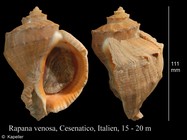
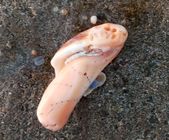
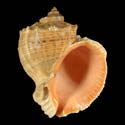
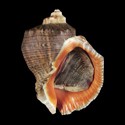
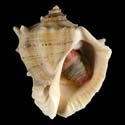
.jpg)
.jpg)


